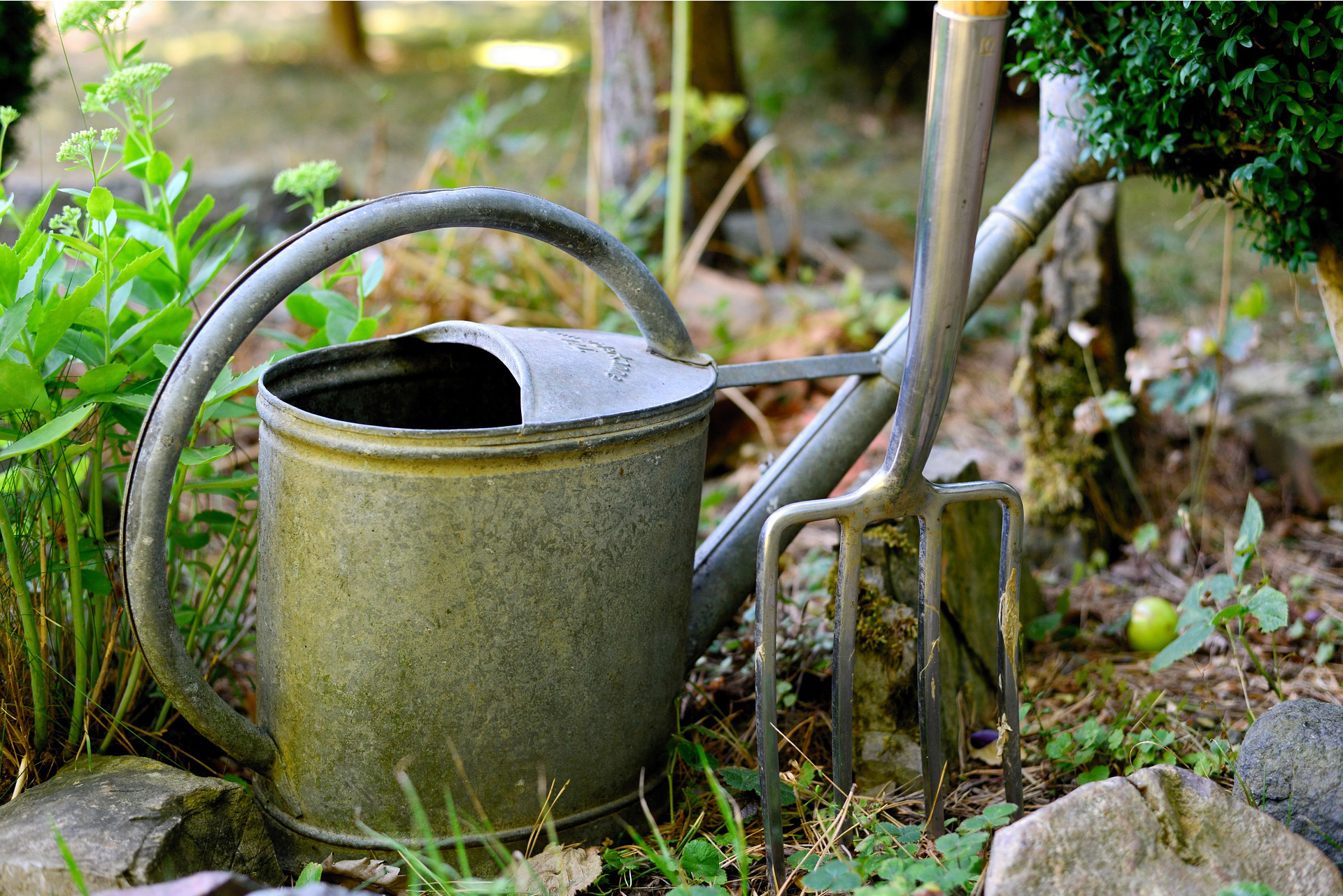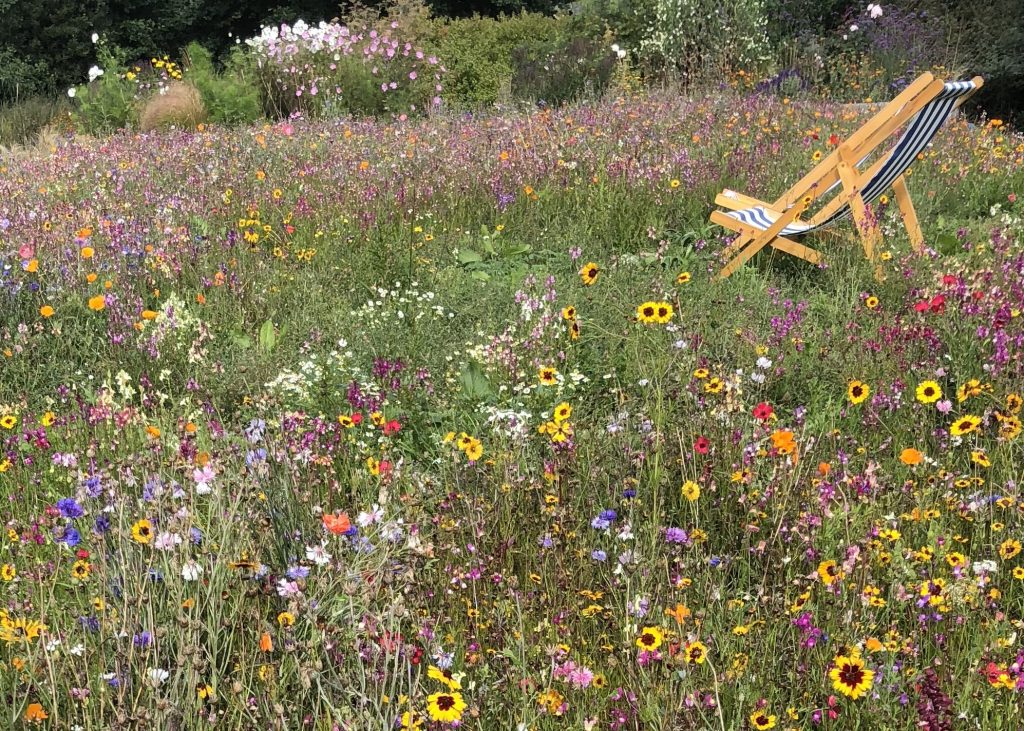Make your New Year resolution a gardening one …

… whether it’s to start Veganuary as you mean to go on, exercise more in the garden or simply ditch plastics, here are 10 ideas to send you on your good and green fingered way from January. See how many of them you can make – and more importantly, keep in 2020.
-
EMBRACE VEGANUARY
There are all sorts of health reasons for going vegan, but you can grow vegan too, just by changing a few habits. So when you’re starting off those veg, if you resolve to be a true vegan, you will avoid animal manures and blood, fish and bone products. Start your own compost bin using green and brown bin using green and brown organic material including grass and plant clippings, leaves and vegetable food waste. To make sure you’ve plenty of iron and protein in your new vegan diet, grow artichokes and broccoli and make your own liquid feed from comfrey, which is easy to grow, by steeping it in a bucket of water for a week and then pouring the liquid over your crops.

Red Chard growing at Lower Lovetts Farm, Berkshire
-
ONLY GROW WHAT YOU EAT
So many gardeners with a new vegetable patch go mad with seeds at the beginning of the year, only to realise that they have grown far too much of a vegetable that they don’t actually like. If you don’t love radishes in every salad, just grow a row or two successionally during the summer, rather than waste them.
Of course, some gardeners are happy to donate or swap crops with fellow vegetable crops with fellow vegetable gardeners, which is fine as long as your neighbour isn’t growing the same crop. Planning ahead is the key.
-
DITCH PLASTICS
This hot topic is set to continue in the foreseeable future, so do your bit to ditch plastics in favour of more biodegradable products. You can look towards bamboo gloves and seed trays, biodegradable mini plant pots, or even use tubes of empty toilet rolls to plant seedlings.
Re-use plastic pots which aren’t recyclable. If you have too many, some garden centres, including Dobbies Garden Centres (dobbies.com), offer take-back schemes, encouraging customers to drop off unwanted plastic trays and pots, making sure they don’t end up in landfill.
-
MAKE A SPACE FOR WILDLIFE
In our increasingly urban sprawl, it’s vital that we keep corridors open for wildlife and it is relatively easy to do. Make a plan to add insect friendly plants and flowers to your design this year, even if you just have a few window boxes or patio containers. The RHS (rhs.org.uk) has lists of plants for pollinators, available to download.
If you have a larger garden, leave an area wild, allowing nettles, brambles and other wild flowers to flourish, which will further attract insects and will make sheltering spots for hedgehogs and other mammals. Bag a bird feeder or two, placing them in a sheltered spot near trees or shrubs, keep them topped up and soon enough the wildlife should start arriving. And leave out a shallow bowl of water with a few pebbles in it, making easy access for insects, frogs and birds.

Am Brook Meadow, Devon, where wildflowers and relaxation make the perfect partners
-
TAKE UP EXERCISE IN THE GARDEN
If the idea of paying for a new gym subscription fills you with dread, why not make the garden your natural exercise area? You can burn 290 calories an hour weeding or 325 calories digging, or more than 500 calories doing more strenuous exercise like chopping wood, says physiotherapist Jacqueline Knox, in her co-authored book Garden Your Way To Health And Fitness (Timber Press).
You can strengthen core muscles doing Pilates-based exercise outdoors but pace yourself, don’t push yourself too hard, always warm up beforehand and do gentle post-gardening stretches afterwards, she advises.
Look out for our Gardens and Health information when the National Garden Scheme launches its 2020 campaign in May.
-
ADOPT A HOUSEPLANT
Houseplants have become more fashionable and diverse in recent years, thanks to social media sharing, and with the wealth of research out there pointing to the fact that houseplants aid wellbeing and air quality, it’s surely time to embrace them.
Some, such as Dracaena marginata, rubber plants and Boston ferns, improve air quality, while peace lilies and ivy have higher transpiration rates which help moisturise the skin and alleviate dry eyes by increasing air humidity inside the home, according to the RHS.
But they also look stylish, with trends still pointing towards easy-maintenance cacti and other succulents.
-
STOP YOUR IMPULSE BUYS
As many shoppers resolve to budget more wisely, so garden shoppers may want to prune their purchases from garden centres. So often we’re tempted to buy that glorious plant which looks beautiful in flower on display, only to find that there isn’t a natural place for it in our garden.
Resolve to make a list each time you visit the garden centre and stick to it. If you know the plant you want and the space that will accommodate it, then fine, but don’t go off the beaten track with spontaneous purchases which won’t fit into your scheme.

-
LEARN TO RELAX
So often, gardeners find it hard to sit back and relax in their garden. There always seems to be so much to do, whether it’s sowing, digging, planting or pruning. Resolve to actually force yourself to sit back in the warmer months and admire the fruits of your labour, hear the birds sing, inhale the scents and enjoy the colour and form you have created.
-
VISIT MORE INSPIRATIONAL GARDENS
Set dates in your diary to visit public and private gardens throughout the year through the National Garden Scheme (click here to find your perfect garden) With over 3,700 inspirational gardens on offer from snowdrops in February to glorious autumn colour the year ahead is full of wonderful gardens to discover.
Garden shows are another way of discovering new trends and new plants. Planning these visits early in the year will not only give you something to look forward to but will also provide inspiration for your own garden. The National Garden Scheme has a presence at many of the large garden shows including RHS Chelsea, Hampton Court, RHS Cardiff, RHS Malvern and RHS Chatsworth.
-
MAKE 10 MINUTES A DAY FOR YOUR PLOT
Even in the depths of winter, the garden can be a great release, whether you’re digging, tidying up or just surveying the scene. Give yourself 10 minutes every day (if you’re not away on holiday) just to go outside and do something in the garden, whether it’s filling up the bird feeder, covering a vulnerable plant or turning the compost heap. Or, visit one of the National Garden Scheme’s snowdrop gardens…
As the weather warms up, those 10 minutes will increase to hours.

Snowdrops, the fragile harbingers of spring will tempt you outside early in the year. Explore snowdrop gardens here Photo: Val Corbett
We wish everyone a wonderful year in the garden, be it your own or an inspirational National Garden Scheme gem. From stately acres to country cottages and urban spaces you can discover your perfect garden at: https://ngs.org.uk/find-a-garden/
[Main copy courtesy of Hannah Stephenson, PA Media]


















